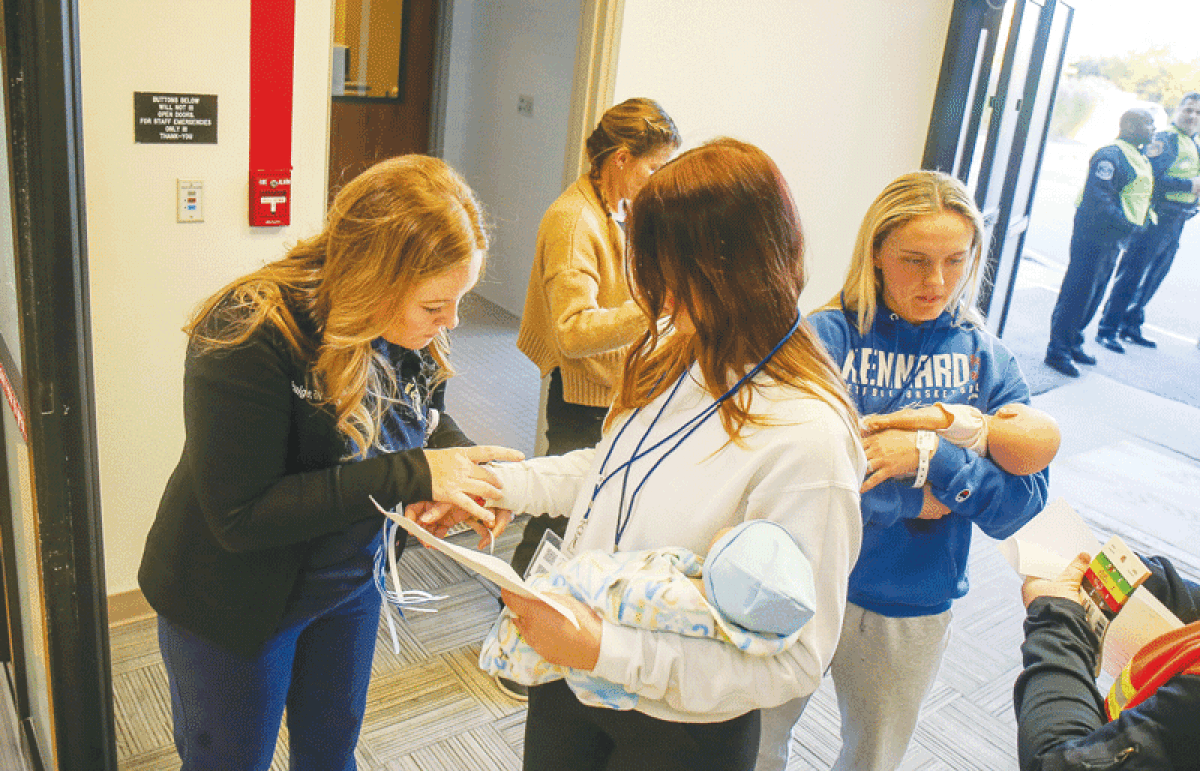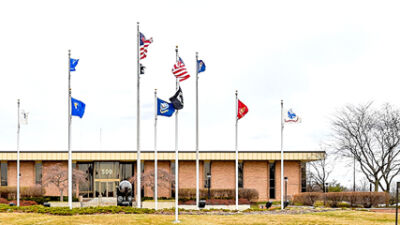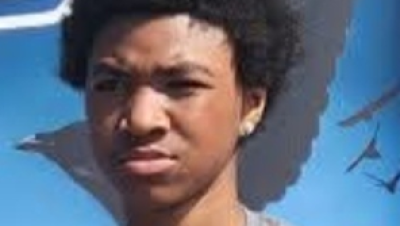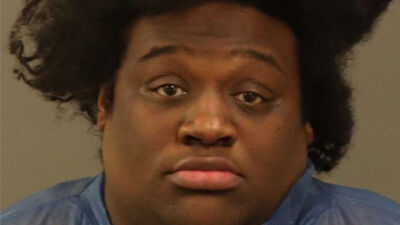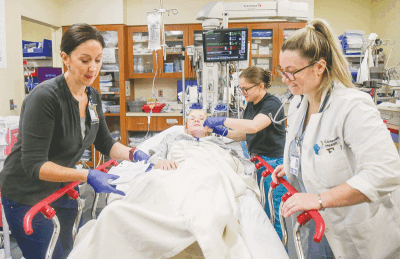
Registered nurse Lisa M., left and Dr. Meredith Colosi, right, tend to a victim with a simulated gunshot wound to the arm during a training simulation of a mass-shooting event.
Photo by Patricia O’Blenes
TROY — No one is ready when a large-scale emergency occurs in a community. However, it is a hospital’s job to be ready for exactly that.
This is why hospitals such as Corewell Health Beaumont Hospital, Troy run mass casualty drills, testing the hospital’s plans, resources and readiness for events in which significant numbers of people are hurt.
They held such a drill Oct. 23. It is something hospital staff members spend months planning and preparing for so they can be sure that if the real thing were to happen, they would be ready.
“The hospital has to have so many exercises per year per regulatory standards and because we want to be prepared, because something like this could happen at any time,” said Naomi Ishioka, the emergency preparedness coordinator at Corewell Health Beaumont Hospital, Troy. “We started preparing for this last October with tabletop exercises where we would take a scenario and walk our staff through it on paper together in a room at the hospital. We then went through in groups, such as charge nurses or managers or administrators. We did exercises to ensure we had sufficient materials in stock. This drill is the final part of that planning process.”
A specific scenario is presented, and volunteers are brought in to act as patients, complete with fake blood and makeup to simulate wounds.
“We do different types of scenarios each time. This scenario was after a couple of gunmen walk into a church. Past scenarios were things like a building collapse following a tornado, or bus rollover accident. These are things that could possibly happen in our community,” said Ishioka. “We have nursing students from University of Michigan-Flint, Oakland University, Rochester University and Chamberlain (University College of Nursing) as actors. They wear tags with things like vital signs and symptoms. A makeup artist school puts makeup on them and they are brought into the emergency room like they would be in an actual emergency.”
Observers from other nearby hospitals were also on hand to improve coordination in the event of large-scale emergencies. This also serves as a learning experience for those entering the medical profession.
“We partner with Beaumont-Corewell on a lot of different levels,” said Dr. Kimberly Holka, a special instructor for the Oakland University School of Nursing. “Taking part today, we have everyone from our sophomore nursing students all the way up to graduate nursing students working, observing or standing in as actors. We have two graduate forensic nursing students here that are observing and evaluating, which is important in situations like this, especially in the collection of evidence.”
Holka added that such experience and out-of-the-classroom training can be invaluable.
“It’s a wonderful experience for them to participate in so they can see what happens,” she said. “We know mass casualty events can happen anywhere in the community, so it’s great preparation as a nursing student or nurse.”
Each “patient” is brought in to simulate a specific injury and act out a specific role, so hospital staff can react to every sort of situation they might encounter, both medical and nonmedical.
“We have 20 nursing students acting as victims. They each have a different injury where they are being processed through EMS, through the emergency room, through triage and to the appropriate (hospital department),” said Holka. “They are given specific details or symptoms. One has their blood pressure being very low, rapid respiration, rapid heart rate, and low oxygenation due to a gunshot wound to her left shoulder. They act out these symptoms so the staff can accurately assess them.”
Jane Kotwick, a nursing student at Oakland University, was among the actors in the drill who was cast as a mother of two with a gunshot wound to her shoulder.
“Through my community class that Dr. Holka teaches, I got involved in the drill,” said Kotwick. “I was assigned my injury this morning. I read my sheet describing my injury, noting that I am gasping for breath and I am anxious. I came in carrying two baby dolls from the nursery. So I get rolled in gasping for breath and trying to hold onto and care for my ‘children.’ I got some fake blood on my shirt, and a makeup artist added a gunshot wound on my shoulder.”
Holka noted that this was great preparation for nursing students who may need to continue working despite being in life-or-death, gory and potentially traumatic situations, and that it was a great way to hammer home lessons like their Stop the Bleed training to help keep patients alive despite blood loss in emergency scenarios.
“This is hands-on experience. They get to look and observe everyone’s plan of action,” she said. “We debrief afterward and discuss what went well and what we could improve and hope each plan was in place and then executed.”
Ishioka said such preparedness is crucial since mass casualty events can turn a hospital upside-down if the staff is not properly prepared.
“On a regular basis, we might get one or two bad traumas every three or four hours,” she said. “It’s possible, if there was a scenario like this shooting, for many people to get brought in at once, and it does stress the staff a lot more. They have to step out of their comfort zone or speed care up in order to get through all of the patients coming in and save the most lives.”
Ishioka ranked the drill’s results as good but noted that there is always room for improvement.
“I think the triage is going very well. Our nurses were able to sort through people very quickly,” she said. “There’s always things to improve. We had an issue with the paging system that we encountered. We had to say ‘Well, this surgeon didn’t get the page. Why didn’t he get the page?’ That’s why we do these exercises.”
 Publication select ▼
Publication select ▼